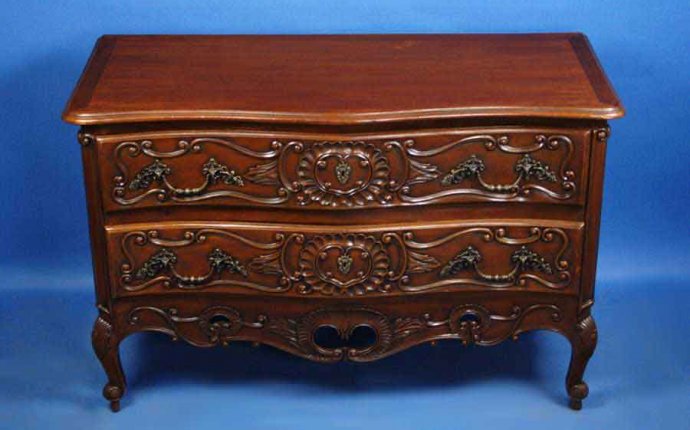
Antique Drawers
Every time I see some new piece of furniture sold for old, I'm reminded of a Lincoln story. Lincoln was summing up a case in which he thought a witness was less than truthful. To recall this to the jury, he asked a riddle. "If you call a cow's tail a leg", Lincoln began, "how many legs would a cow have?" He paused, then answered, "Just four – because calling a tail a leg don't make it so."
Just like calling a piece of furniture old, don't make it so. One of the ways to make sure a piece of furniture is actually old, and not over restored, reproduced or new, is to look for genuine signs of normal wear and aging. In this article, we will be discussing the aging and wear patterns on American bottom gliding drawers (Fig. 1).
Begin a drawer examination by pulling out and turning over the lowest or bottom drawer first. Look at the underside. Now pull out the highest or top drawer and look at the underneath side of it. The underneath side of the lowest drawer should be darker than the underneath side of the top drawer. Over many years the dirt, dust, grease and smoke circulating in room air is absorbed by the exposed bottom of the lowest drawer (Fig. 1). Less air reaches upper drawers because they are protected by the drawer(s) below. Less air means less exposure to smoke and grease. That's why the underneaths of genuinely old upper drawers are lighter in color than genuinely old lower drawers (Fig. 3).
This is generally true for all pieces of furniture regardless of the number of drawers (Fig. 2). Even if there are only two drawers, the underneath of the top-most drawer should be lighter than the underneath of the bottom-most drawer.
If you decide the bottoms of the drawers are correct and want to continue your examination, don't put the drawers back just yet. While you have them out, you should now check for several other small but important details that can tell you about age, repairs, extent of restoration and whether the finish is original.









